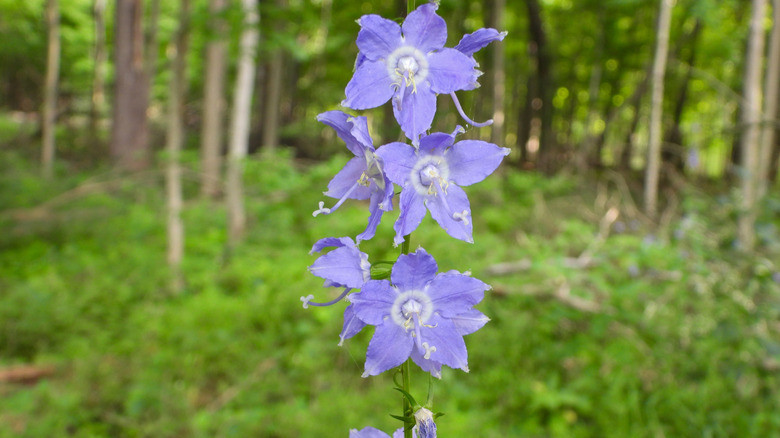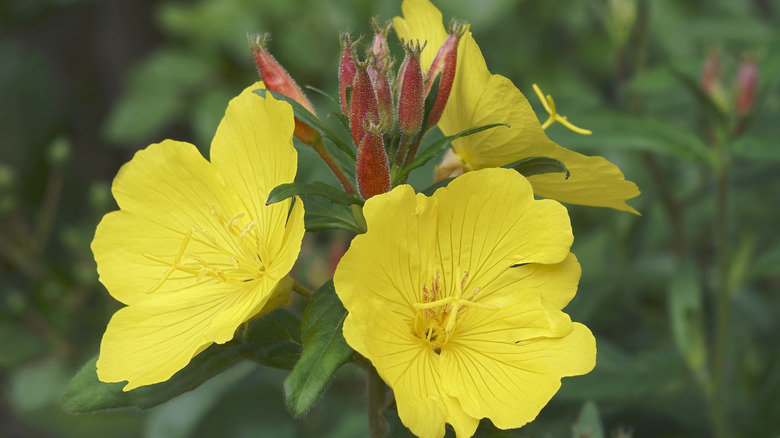What Are Biennial Plants And Which Ones Are Best To Grow?
When browsing plants at a nursery, you will likely see two types of plants listed: annual and perennial. However, there's another kind of plant you should know about: biennials. While annuals complete their lifecycles in one year, and perennials live for at least three years — but often much longer — biennials have a two-year lifecycle. While there are many great biennials to consider, if you're expecting two years of blooms, you'll need to adjust your expectations. During the first year, you will see foliage-only growth while the plant concentrates on creating a solid root structure and food storage. This means you won't see blooms until the second year of growth.
While it can be disappointing to know your favorite flowers won't be coming back year after year, you can still make it look like they do with a bit of planning. Many of these biennial plants will reseed themselves, so if you plant them in alternate years, you can be relatively sure that you'll have a steady stream of blooms each year.
Biennials that can add height to your garden
There are plenty of beautiful biennials out there, but a few particular ones can bring added height and drama to your garden. Tall bellflower (Campanula americana) can grow up to 6 feet tall, and do well in USDA zones 4 through 7. These spiked plants are covered in blue, flat, star-shaped flowers and prefer a bit of shade during the hottest days of the summer. Perhaps the best thing about tall bellflower is that they are a less problematic alternative to other popular spiky biennials.
For instance, the common foxglove (Digitalis purpurea), which is hardy in zones 4-9, is a biennial that brings a lot to any garden — including very liberal reseeding. So liberally, in fact, some places consider these European wildflowers invasive, especially Oregon. With that in mind, you might to consider other native flowers as foxglove alternatives. Similarly, hollyhocks (Alcea rosea), which are hardy in zones 2 through 10, are another biennial that can bring added height to your garden. However, they are also known to become invasive in warm climates, so make sure to keep an eye on these if you live in a warmer zone.
Easy to grow evening primrose
For an easy to grow biennial option with fewer complications, consider the common evening primrose (Oenothera biennis). It is native throughout much of the U.S. and Canada, and doesn't require much pampering to grow. Hardy in USDA zones 4 through 9, they can thrive in a variety of soils, and produce bowl-shaped yellow flowers on 3 to 5 foott tall stems. One of the coolest aspects of the evening primrose is that the flowers open at night, attracting night-flying moths. Primrose oil is also used in many medicinal capacities, and the plant will self-seed to remain present in your garden even after its biennial lifecycle is done.
It's worth noting that any self-seeding plant can quickly take over a garden when it's got the right conditions to thrive. Therefore, it can be important to consider deadheading your garden as a particularly helpful way to keep any specific plant from taking over. While you can obviously leave some seeds to ensure your favorite plants come back year after year, consider controlling the spread by trimming the plants or collecting the seeds.


